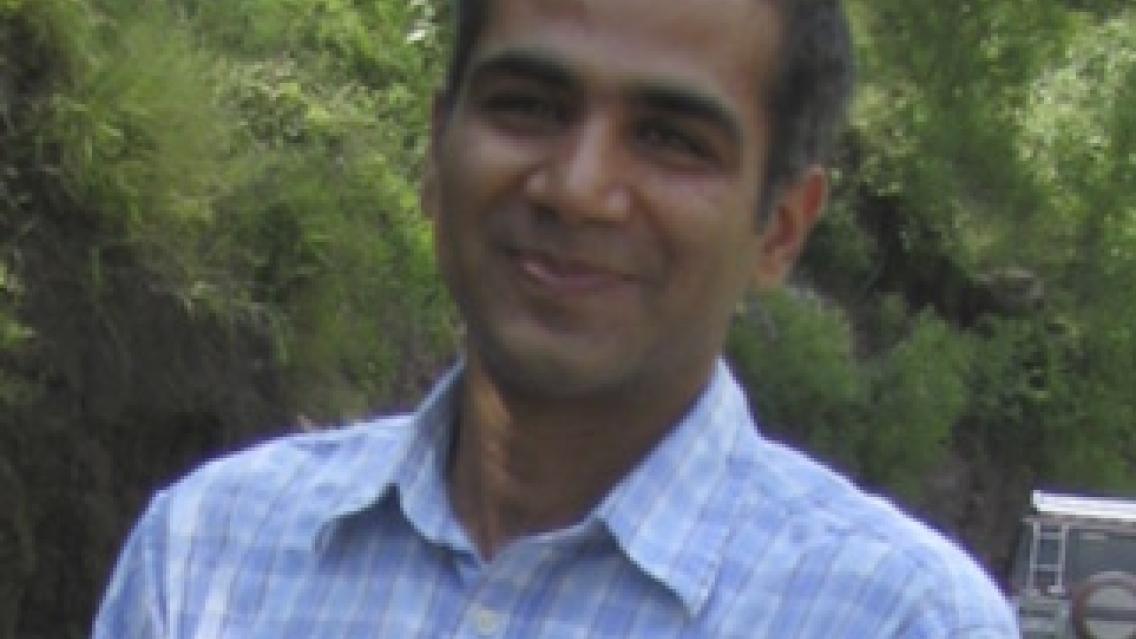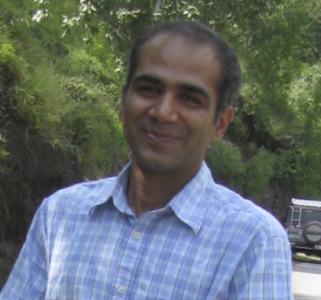Water and Disasters Thematic Lead Interview -- Dr. Farrukh Chishtie

For more information about this SERVIR service area campaign, click here.
Name/Title
Dr. Farrukh Chishtie, Science and Data Co-Lead
 |
What is your educational background?
I am formally trained in the natural social sciences as well as engineering disciplines, and hold two doctorates from the University of Western Ontario, Canada. The first doctorate is in Theoretical Physics and Applied Mathematics, while the second is in Education with a specialization in Environment and Sustainability. In terms of informal experience and education, I have worked in two key disaster zones: the 2005 South Asian earthquake, and the 2010 super flood in Pakistan.
What do you do in your current position? What are you working on now?
Presently, I am the Science and Data Co-Lead, as well as the Water and Disasters Lead at the SERVIR-Mekong project in the Asian Disaster Preparedness Center (ADPC), Bangkok. My position entails overlooking and ensuring quality of science-based services and timely data delivery along with my co-lead David Saah, across the four SERVIR themes, namely, Landscape and Ecosystems, Water and Disasters, Agriculture and Food Security and Weather and Climate. In addition, I am actively managing stakeholder relationships in various services and production streams, and work closely to support all expert leads tasked with each delivery, including meeting capacity building needs. In terms of technical work, I am the service lead of the Historical Flood Analysis Tool which is aimed for better emergency preparedness for Myanmar. In contrast, I am also the service lead of the Regional Drought and Crop Yield Information Service (RDCYIS) which is improving Drought and Crop Resilience in Ning Thuan, Vietnam. Finally, I also lead the technical production of HYDRAFloods (Hydrological Remote Sensing Analysis of Floods), a state-of-the-art near real time flood monitoring service which is being developed with dedicated Deltares, NASA, and Spatial Informatics Group (SIG) team members.
What are the biggest water/disaster challenges in the Lower Mekong Region? How can GIS and remote sensing technologies help address these problems?
The Lower Mekong Region is facing increased impacts from disasters due to changes arising from both anthropogenic activities and climate variability. Disasters such as floods, droughts, and landslides (along with water scarcity) are key issues in the region. With remote sensing, GIS and modeling techniques, we are aiming to assist existing stakeholders including organizations and agencies in improving their present capacity to contend with these crises and disasters by addressing gaps in their current practices. For example, there is often a gap in lack of ground observational capabilities which can be supplemented by satellite-based Earth observations.
What specific tools and technologies are you using to solve these problems?
We are using freely available Earth observations in an accessible cloud computing environment, which is Google Earth Engine along with the development of independent and connected software packages using Python and R (used for visual data analytics). We also utilize open source GIS software such as QGIS as well as ArcGIS to conduct analyses on these Earth observations and provide both the data and products in the form of user-defined features, which are typically delivered as web-based tools.
What do you find unique about your work with SERVIR?
The connection and development of productive relationships with various stakeholders with solid service delivery aimed towards impact is a unique and greatly satisfying part of working with SERVIR.
How will SERVIR and the wider GIS community benefit from the new services and applications you are developing?
With the current tools in development, we will be able to assist, using Earth and ground observations, in addressing both floods and droughts to lessen their impact on those facing these disasters. Ultimately, these services will also help in effective water resource management in the region.
What are some of the main achievements of your work so far in this thematic area?
A key achievement of our work is the establishment of a harmonious and productive relationship with our stakeholders, which grows through active engagement and co-development activities. This includes identifying stakeholder needs, and assembling relevant disciplines and technologies towards agreed upon outputs/outcomes aimed at longer term impacts.
Technically, I have been able to develop and work with colleagues in developing an innovative, near real time flood mapping service named HYDRAFloods, which is being tested and will be released shortly for the Department of Disaster Management (DDM), Myanmar. This service is expected to provide timely flood maps in a region frequently afflicted by such disasters.
Is there anything else you would like to share with our readers?
The work I am part of entails collaborative engagement with various disciplines and a rich diversity of local and international expertise, which is a core strength of our SERVIR-Mekong team. This also includes our consortium partners, who are vital contributors of our service delivery efforts across SERVIR’s four thematic areas. I applaud their partnerships and support, which is key for ensuring our continued success in the region and beyond.
This interview was conducted by Wadee Deeprawat at SERVIR-Mekong. It has been lightly edited for style and length by SERVIR Global.

